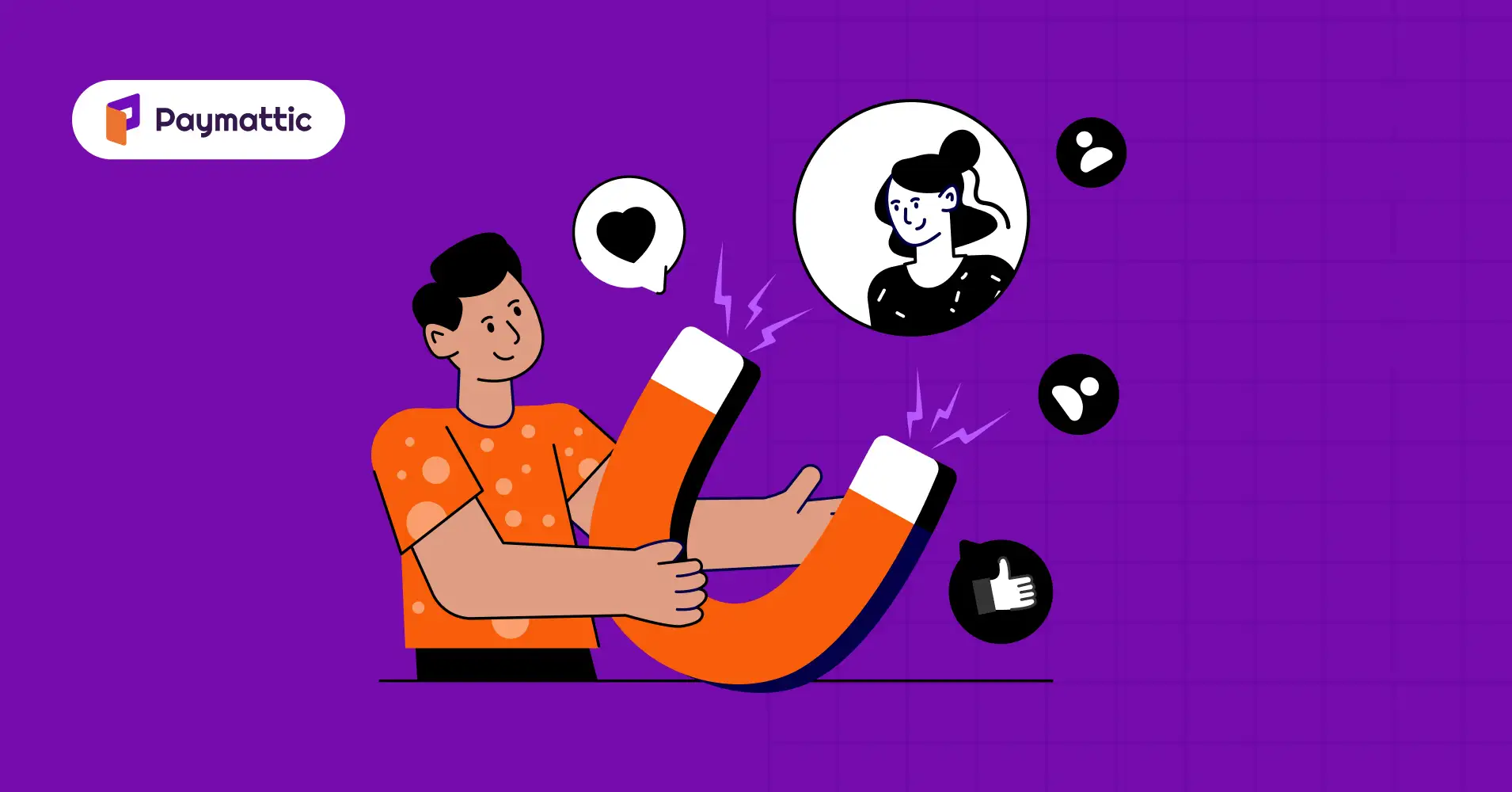
27 Ways To Increase Customer Engagement And Boost Conversion
Table of Content
Download Paymattic – it’s Free!

Subscribe To Get
WordPress Guides, Tips, and Tutorials
We will never spam you. We will only send you product updates and tips.
Customer engagement is a decisive factor in the growth and profitability of any business. Keeping your customers engaged results in stronger relationships, higher retention, and increased conversions.
In this blog, I’ll cover the concept of customer engagement, its benefits, and actionable strategies to increase customer engagement for your business.
Whether you’re an e-commerce entrepreneur or a small business owner, these strategies will help you refine your customer engagement strategies and achieve consistent growth.
So, why wait? Let’s dive right into it.
What is customer engagement?
Customer engagement definition means the emotional connection and interaction customers have with a brand. It includes every experience, action, or communication between your business and your customers, both online and offline.
High levels of engagement mean that your customers find your brand valuable and satisfying, which often translates into loyalty and advocacy.
Customer engagement is the central component of your client engagement strategies. It drives long-term relationships rather than one-off transactions.
Benefits of increasing customer engagement
An effective customer engagement strategy brings numerous benefits.
Here are six key advantages:
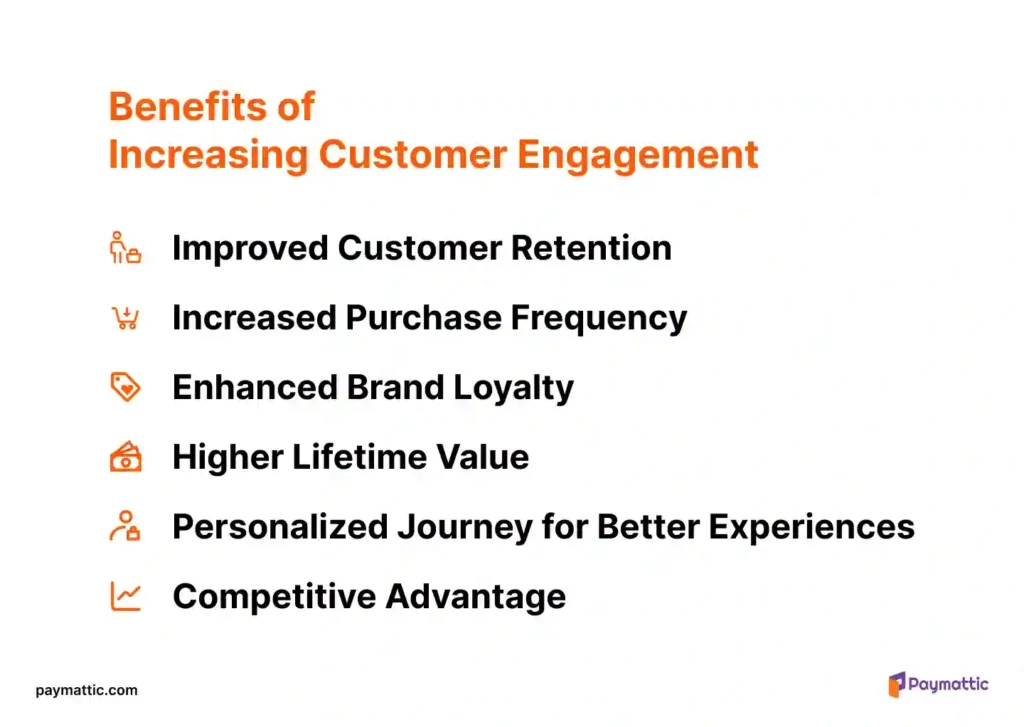
1. Improved customer retention
Engaged customers feel valued and are more likely to stay loyal to your brand long-term. A higher retention rate means consistent revenue and reduced customer acquisition costs.
2. Increased purchase frequency
By keeping meaningful interactions, you encourage your customers to make repeat purchases. Higher engagement often translates to increased conversions and a healthier bottom line.
3. Enhanced brand loyalty
Loyal customers are more likely to recommend your business to others. Strong engagement creates trust. And it makes customers advocate for your brand.
4. Higher lifetime value
Engaged customers are willing to spend more with your business over time. Which increases their lifetime value and contributes to long-term business profits.
5. Personalized journey for better experiences
Through sustained engagement, your business gains insights into customer behavior. This data allows you to create tailored experiences, increasing satisfaction and repeat behavior.
6. Competitive advantage
Engagement sparks differentiation. When customers feel connected to your brand, they remain less susceptible to competitors’ marketing and outreach efforts.
Customer engagement metrics
Tracking the right metrics ensures your customer engagement plan is effective.
Focus on these customer engagement metrics:
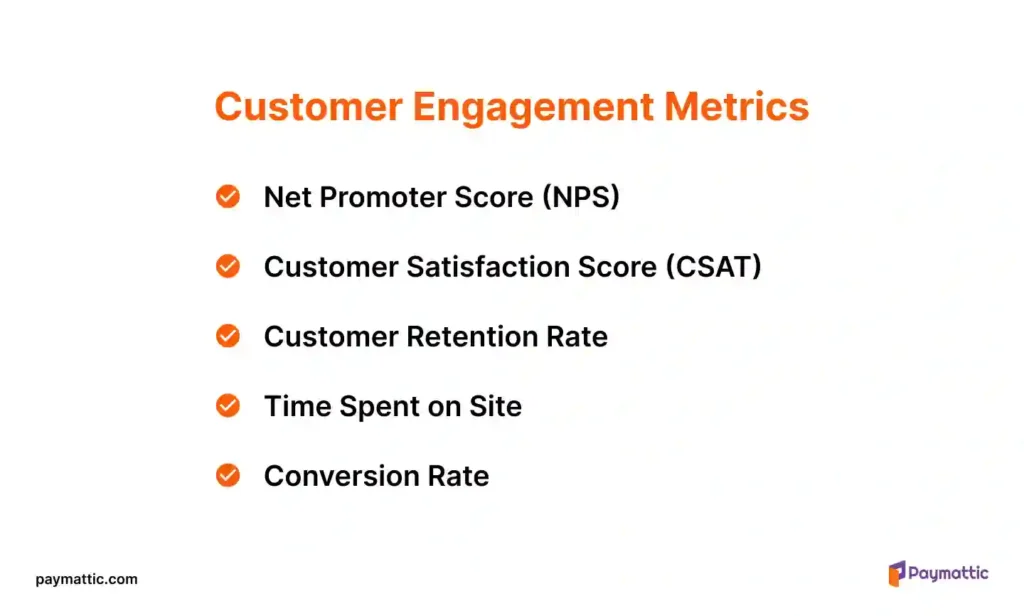
- Net Promoter Score (NPS): Measures customer loyalty and likelihood to recommend your brand.
- Customer Satisfaction Score (CSAT): Tracks customer contentment with your products or services.
- Customer Retention Rate: Indicates how many customers are returning over time.
- Time Spent on Site: Assesses interest in and engagement with your website content.
- Conversion Rate: Tracks the percentage of customers who complete desired actions (e.g., making a purchase).
Customer engagement models
Understanding engagement models will help you choose the right customer engagement solutions.
Here are some very popular customer engagement models:
AIDA model
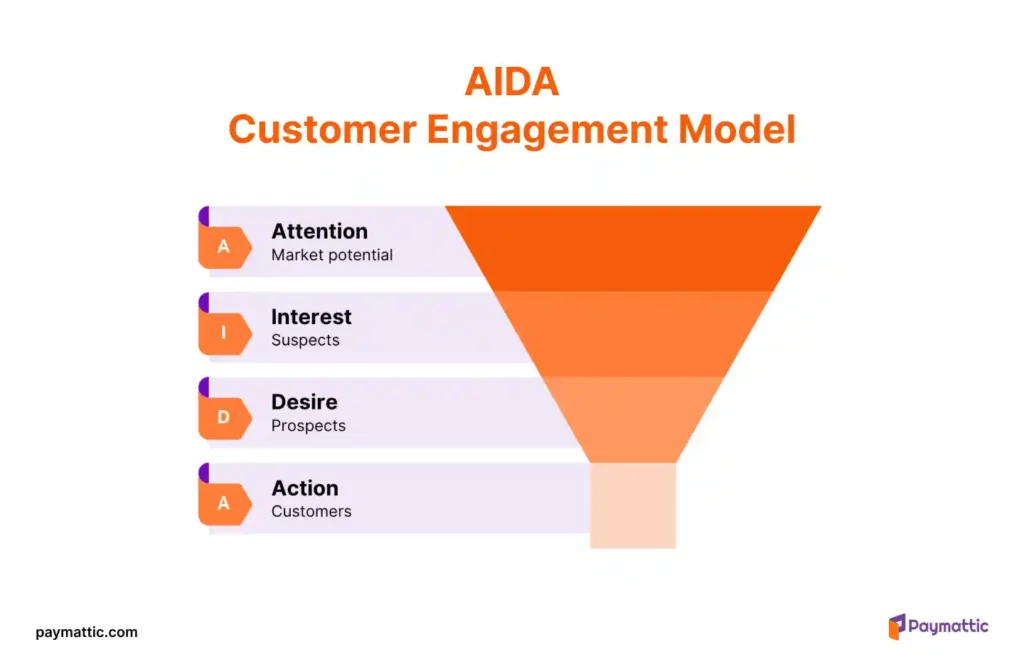
The AIDA model focuses on four key stages of the customer relationship.
- Attention
- Interest
- Desire
- Action
This model, commonly known as AIDA, is widely used in sales, marketing, and engagement campaigns to guide potential customers through a thorough decision-making process. By capturing their attention, sparking interest, building desire, and encouraging action, the AIDA framework ensures a structured approach to converting leads into loyal customers.
RACE model
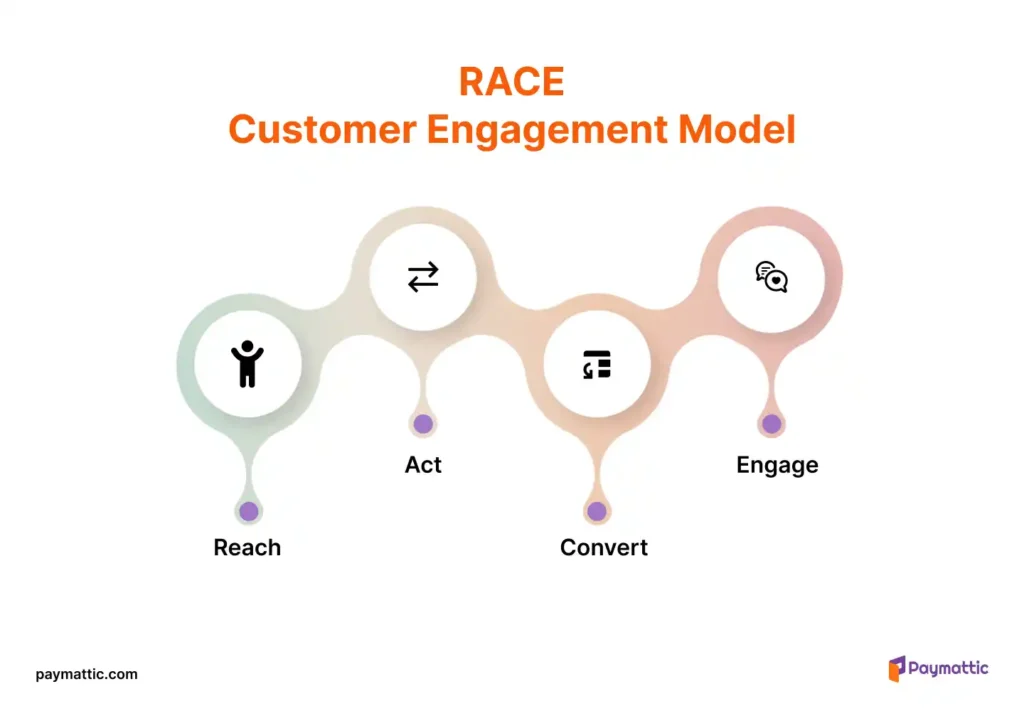
The RACE model covers four stages
- Reach
- Act
- Convert
- Engage
The RACE model is where businesses first reach out to their target audiences using various marketing channels to build awareness. Next, they provoke these audiences to act. It can be done by exploring their offerings or engaging with content that adds value.
The third stage focuses on advancing conversions. This is how it turns interest into measurable actions like purchases or sign-ups.
Finally, the Engage stage creates ongoing interaction loops. It creates loyalty and builds long-term relationships through personalized communication and consistent value delivery.
This framework ensures a holistic approach to customer engagement and business growth.
Subscribe Newsletter
Subscribe to our newsletter for updates, exclusive offers, and news you won’t miss!
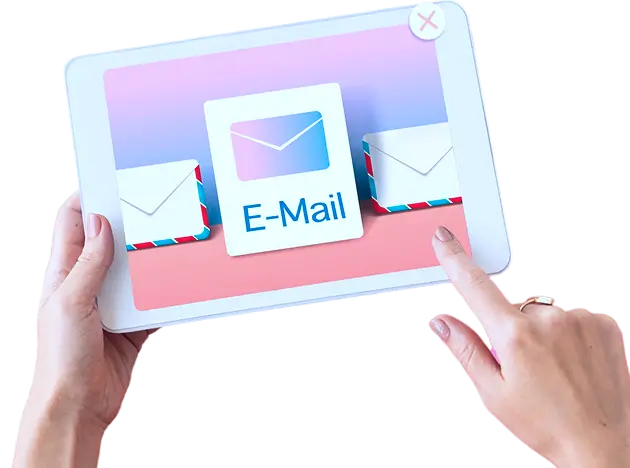
USP model
This model highlights the customer engagement plan by focusing on a brand’s unique selling propositions (USPs).
It focuses on identifying what sets your business apart from the competition. And then use those key strengths to build meaningful connections with your customers.
Tailoring engagement strategies around what makes your business unique, this model ensures that your audience not only notices but also values the specific qualities of your brand.
High-touch model
This strategy is highly effective for service-heavy businesses where building strong relationships through personalized interactions is essential.
The high-touch model focuses on maintaining frequent, refined communication that discusses individual customer needs and preferences. This is how it creates a more meaningful connection.
By doing so, your business can engage customers more effectively, ensuring higher satisfaction and loyalty over time.
Low-touch model
The low-touch model is ideal for digital-first, automation-centric businesses.
In this model, interaction with users is kept minimal. Most processes and engagements are handled through advanced automation. It streamlines operations and reduces the need for manual intervention.
What is a customer engagement strategy?
A customer engagement strategy is a curated plan outlining the ways a business will engage with customers across various touchpoints.
It ensures meaningful connections and improves user experience, satisfaction, and loyalty. Your customer engagement management should be proactive, assessing feedback and data to make informed decisions.
27 strategies to increase customer engagement
An effective client engagement strategy can do wonders for your business. Here are 27 actionable ways to improve interactions and drive conversions:
1. Offer transparent pricing and policies
Customers appreciate honesty.
Clearly display pricing and any associated fees upfront to build trust. Avoid hidden costs that might surprise them at checkout, and make return, refund, or warranty policies easy to understand and accessible.
2. Display real customer reviews and testimonials
Showcase reviews, testimonials, and case studies from actual customers to validate your product or service. Genuine feedback serves as social proof and can help potential buyers feel confident about their purchase.
3. Use customer behavior data to tailor recommendations
Analyze customer behavior like browsing history, past purchases, and preferences to personalize product suggestions. Tailored recommendations provide a more relevant shopping experience and increase the likelihood of engagement and sales.
4. Implement dynamic email campaigns
Create email campaigns based on recipient behavior. For example, send follow-up emails for abandoned carts, personalized product suggestions, or time-sensitive discounts to keep customers engaged.
5. Invest in interactive blog posts, videos, and infographics
Create content that captures attention and encourages interaction. Informative, visually appealing blog posts, how-to videos, or infographics can educate your audience and establish your brand as a trusted resource.
6. Develop how-to articles solving customer pain points
Write articles that address common customer challenges and offer actionable solutions. This positions your brand as a helpful authority in your industry and builds loyalty by solving real problems.
7. Host live events or webinars
Engage your audience in real-time through live events or webinars. These sessions provide opportunities for direct interaction, Q&A, and showcasing your expertise, which helps deepen customer relationships.
8. Run contests and giveaways
Create fun contests or giveaways to encourage customer participation and increase brand awareness. Offer appealing prizes to attract engagement, and use the opportunity to grow your email list or social media following.
9. Set up a regular newsletter
Send a consistent newsletter to keep customers updated on new products, promotions, and industry trends. Make it informative and engaging to maintain regular communication with your audience.
10. Use retargeting campaigns with personalized ads
Retarget customers who have previously interacted with your brand using tailored ads. These personalized reminders keep your products top of mind and can encourage them to complete a purchase.
11. Create a comprehensive loyalty rewards program
Reward repeat customers with points, discounts, or exclusive perks. A well-designed loyalty program encourages long-term relationships and keeps customers coming back.
12. Send exclusive offers to long-time customers
Show appreciation for your loyal customers by offering them exclusive discounts, early access to sales, or rewards. Personalized gestures make them feel valued and keep them engaged.
13. Implement an omnichannel customer support system
Provide consistent and seamless support across multiple channels, such as social media, email, chat, and phone. A reliable support system ensures customers can reach you anywhere, anytime.
14. Use ai-based tools for better customer outreach
Leverage AI tools for smarter customer engagement. These tools can help you analyze data, predict customer needs, and deliver personalized communication at scale.
15. Launch intuitive mobile apps
Create a mobile app that offers a user-friendly shopping or service experience. Include features like push notifications, easy navigation, and exclusive app-only perks to encourage downloads and usage.
16. Provide a robust self-help or faq section
Develop a thorough FAQ or self-help section with clear, concise answers to common customer questions. This empowers customers to find solutions independently, enhancing their experience.
17. Offer interactive tutorials or demos
Provide step-by-step tutorials or product demos to educate customers on how to use your products effectively. Interactive content helps customers feel more confident and connected to your brand.
18. Provide free trials or samples
Allow customers to experience your product or service risk-free with a free trial or sample. This builds trust and gives them a chance to see the value you offer before committing.
19. Introduce achievement badges or leaderboards
Gamify the customer experience by offering achievement badges or creating leaderboards for milestones like purchases or referrals. Adding fun incentives encourages engagement and repeat actions.
20. Reward customers for milestones like anniversaries
Celebrate milestones like customer anniversaries or birthdays with special offers or gifts. These personal touches strengthen relationships and make customers feel appreciated.
21. Organize physical events or brand meetups
Host in-person events or meetups to create a sense of community around your brand. These gatherings provide a platform for direct interaction and help humanize your business.
22. Distribute personalized gifts during in-store visits
Enhance the in-store experience by surprising customers with small, personalized gifts. This gesture leaves a lasting impression and adds a personal touch to their visit.
23. Use surveys to understand customer needs better
Conduct surveys to gather insights into what customers want and need from your brand. Use this feedback to refine your offerings and show customers that their opinions matter.
24. Allow social media followers to vote on future product releases
Engage your audience by letting them vote on new product ideas or features through social media polls. This not only builds excitement but also gives customers a sense of ownership in your brand.
25. Partner with influencers relevant to your niche
Collaborate with influencers who align with your brand values and target audience. Their endorsements can help you reach a wider audience and build credibility with potential customers.
26. Co-create initiatives with your most engaged customers
Work with your most loyal customers to develop new products, services, or campaigns. Co-creation fosters a sense of partnership and strengthens the bond between your brand and its advocates.
27. Surprise customers with little extras like handwritten thank-you notes
Add a personal touch to your interactions by including handwritten thank-you notes or small surprises with orders. These thoughtful gestures make customers feel valued and create memorable experiences.
How to increase customer engagement on a website
Boosting online customer engagement requires a user-first approach that focuses on creating a seamless and rewarding experience for visitors.
- Optimize website speed and navigation
Ensure your site loads quickly and is easy to navigate, as slow or confusing pages can lead to higher bounce rates. A well-structured website keeps users engaged and encourages them to explore further.
- Introduce live chat for real-time support
Adding a live chat feature lets customers get their questions answered instantly, improving satisfaction and providing a personal touch to their online experience.
- Incorporate product videos and interactive visuals
High-quality visuals and videos help showcase your products or services more effectively, giving users a better understanding and making their browsing experience more engaging.
- Use CTAs like “Subscribe Now” or “Learn More”
Strategic and clear calls to action guide users toward taking desired steps, such as subscribing to newsletters, exploring products, or making a purchase.
- Encourage website visitors to leave reviews or score products
User reviews and ratings not only build trust but also provide valuable feedback and social proof to potential customers, driving more engagement.
How to increase customer engagement on social media
Driving customer outreach on social media relies on creating engaging and interactive campaigns that encourage meaningful connections.
- Post polls and Q&A sessions to invite participation and gather valuable feedback directly from your audience. These tools help spark conversations and make customers feel involved.
- Share user-generated content featuring your customers to build trust and authenticity. Highlighting their experiences with your brand shows appreciation and fosters a sense of community.
- Use stories as a direct engagement tool by sharing behind-the-scenes content, product demos, or quick tips. Stories are a great way to maintain a casual, approachable tone while staying on your audience’s radar.
- Run content tailored to current events or trends to stay relevant and relatable. Tapping into trending topics can increase visibility and show your brand’s awareness of what matters to your audience.
- Collaborate with social media influencers to expand your reach and tap into new audiences. Influencers can showcase your brand in a credible and relatable way, boosting trust and engagement.
Use Paymattic to increase customer engagement
Paymattic is the best WordPress payment and donation plugin. Apart from being the perfect payment and donation plugin, Paymattic offers incredible insight into your customers.
When a customer makes a payment, Paymattic creates a customer profile showcasing all the interactions the specific customer has made. The customer profile shows active subscriptions, customer engagement by forms, and the customer’s spending graph over time. All of this information is incredibly useful for your business.
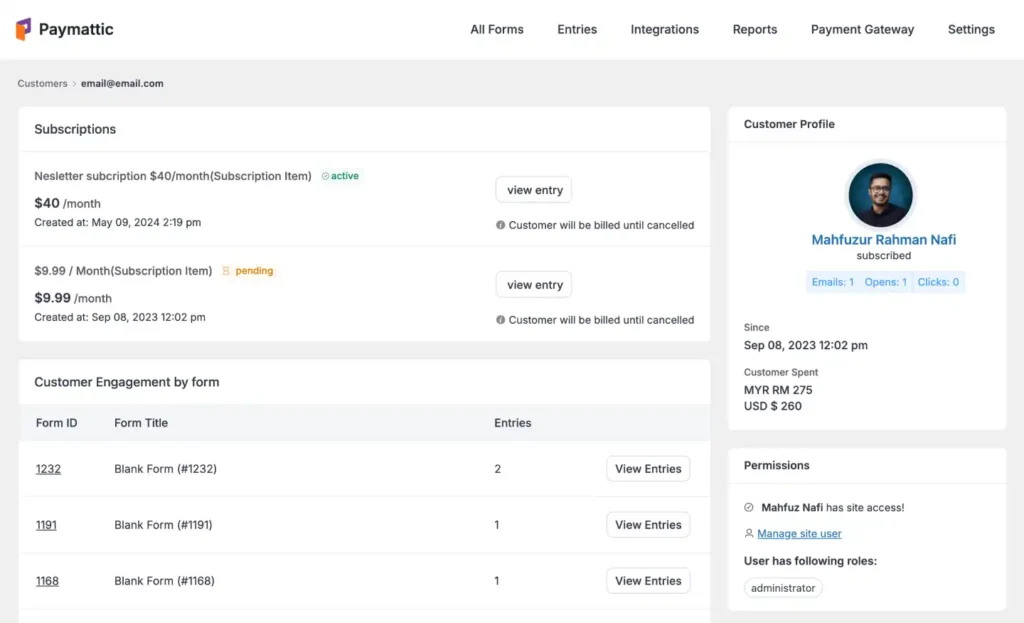
Also, Paymattic offers a customer dashboard to your customers, where they can see their payment history, active subscriptions, and a lot more. Most importantly, your customers can directly unsubscribe from their customer dashboard.
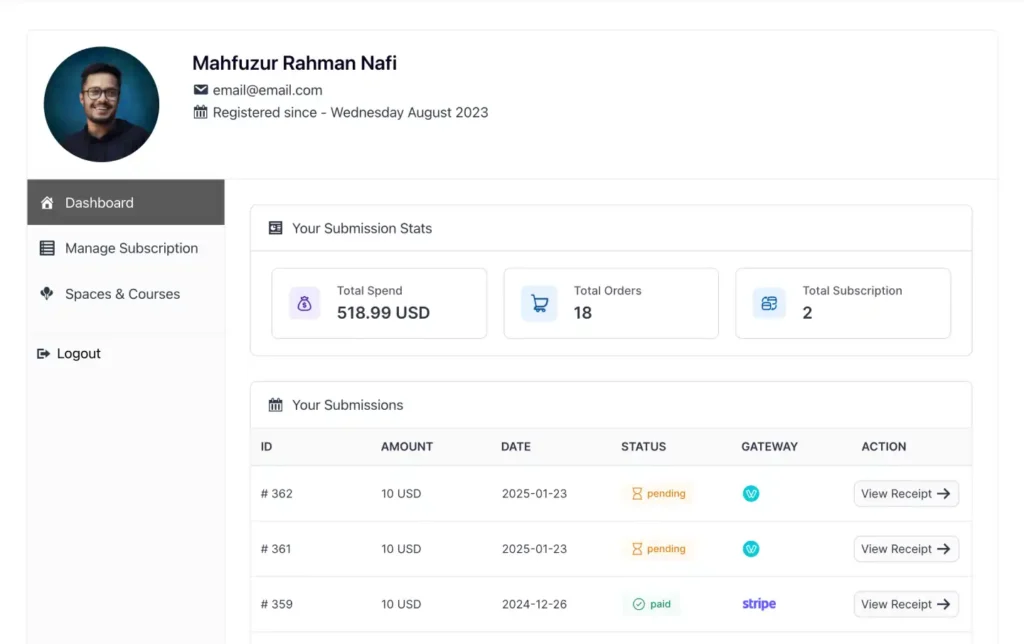
Not only that, but you can also integrate Paymattic with popular CRM software like FluentCRM, MailChimp, and Zapier.
This is how you can get your real-time customer data to your CRM from Paymattic. And you can start email campaigning right away.
Conclusion
High customer engagement management is essential to achieve sustainable growth for your business.
Engaged customers are loyal customers. And loyalty breeds profitability. By implementing these ways to increase customer engagement, you can maximize customer satisfaction and position your business at the top of your competition.
If you’re looking for effective customer engagement solutions, start applying these strategies today and watch your business thrive.
Join the thousands already enjoying Paymattic Pro!
Mahfuzur Rahman Nafi
Mahfuzur Rahman Nafi is a Marketing Strategist at WPManageNinja. With 4 years of experience in Product Marketing, he has developed marketing strategies, launched products, written content, and published websites for WordPress products. In his free time, he loves to read geeky stuffs.




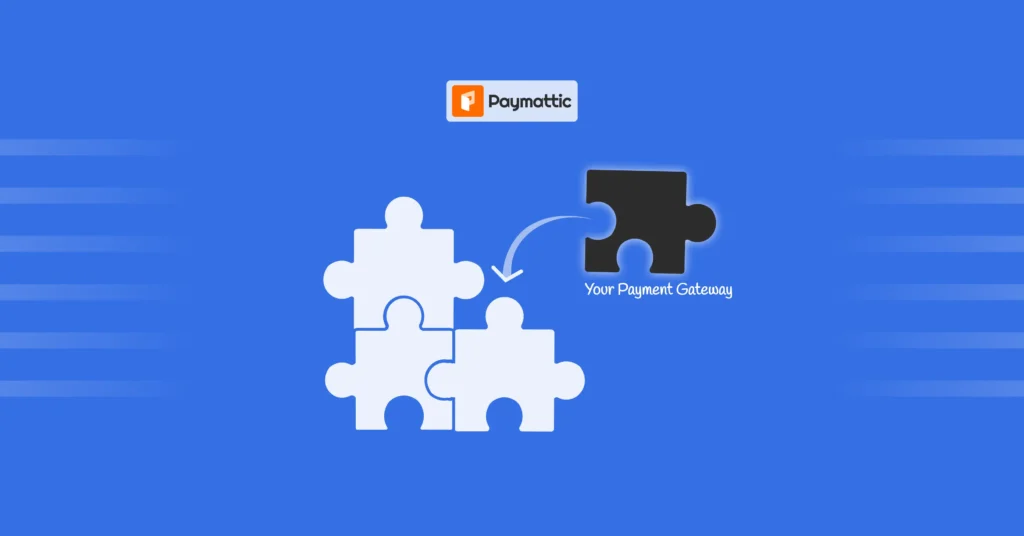
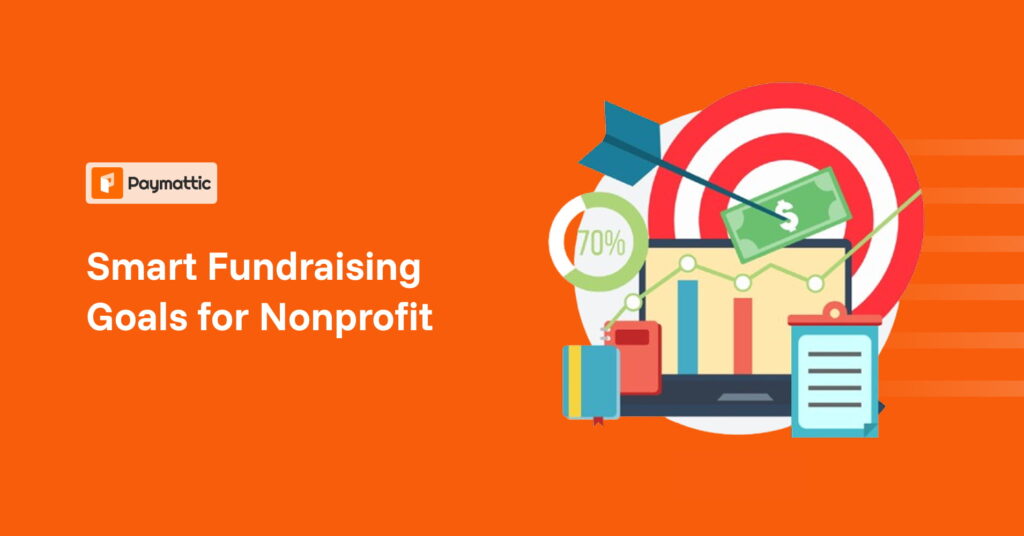
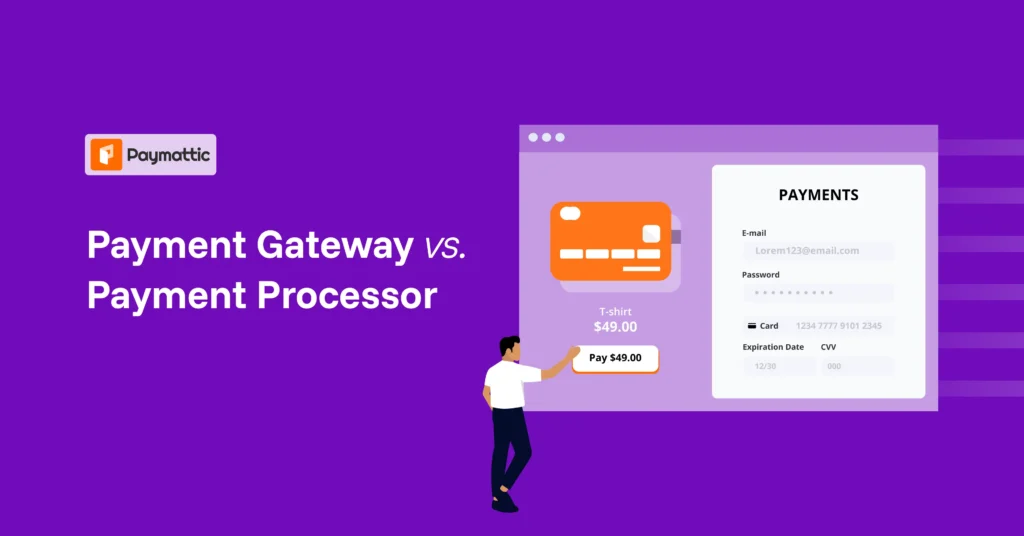
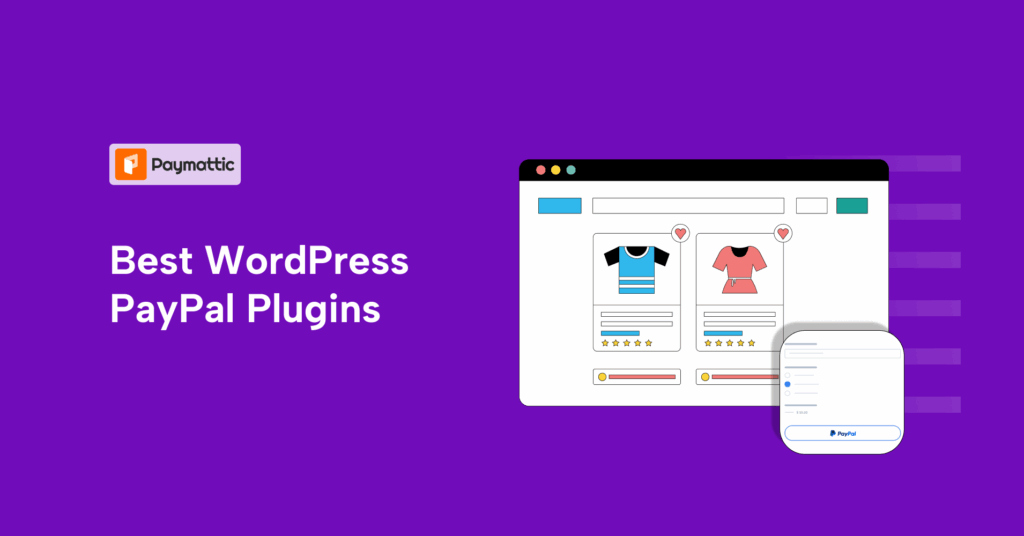

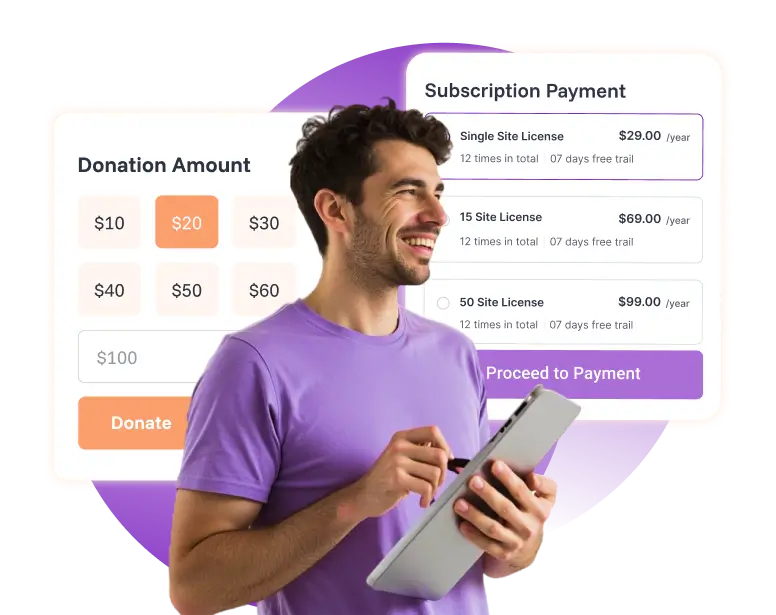
Leave a Reply